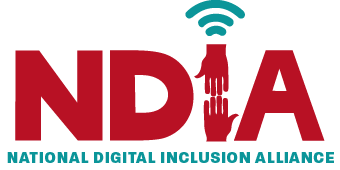Chapter 1: What is a “community digital inclusion program”?
NDIA’s definition of “digital inclusion”:
Digital inclusion refers to the activities necessary to ensure that all individuals and communities, including the most disadvantaged, have access to and use of information and communication technologies (ICTs).
This includes the following five elements:
- Affordable, robust broadband internet service
- Internet-enabled devices that meet the needs of the user
- Access to digital literacy training
- Quality technical support and
- Applications and online content designed to enable and encourage self-sufficiency, participation and collaboration.
Digital inclusion must evolve as technology advances.
Digital inclusion requires intentional strategies and investments to reduce and eliminate historical, institutional and structural barriers to access and use technology.
A community digital inclusion program is a local nonprofit, public or private initiative aimed at making at least one of the “five elements”—affordable broadband, internet-enabled devices, digital literacy training, technical support or empowering applications or content—more accessible to community members, especially the “most disadvantaged.”
Public and nonprofit leaders have created practical, hands-on digital inclusion programs in communities throughout the U.S., such as digital skills training centers, public computer labs, nonprofit computer refurbishing, community wireless broadband and others.
Some of these programs have served their neighbors since the 1990s. Others have just started up recently. Their sponsors and leaders include library systems, local governments, public-housing authorities, schools, colleges and a wide variety of nonprofit groups: social service agencies, faith organizations, civil rights and neighborhood organizations and a handful of “community technology” groups created to pursue digital inclusion as their primary mission.
